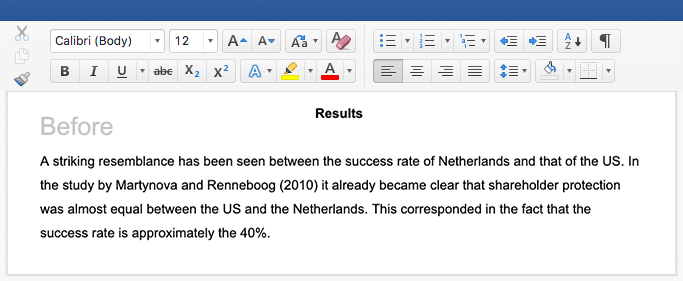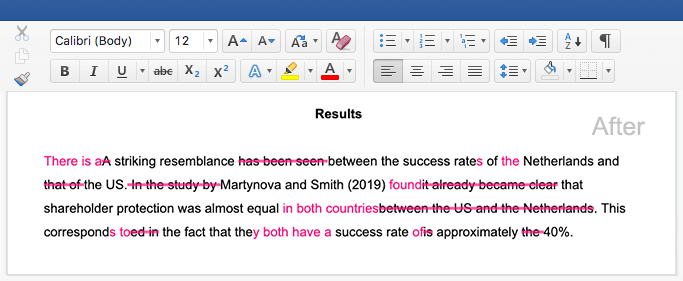What Is a Research Methodology? | Steps & Tips
Your research methodology discusses and explains the data collection and analysis methods you used in your research. A key part of your thesis, dissertation, or research paper, the methodology chapter explains what you did and how you did it, allowing readers to evaluate the reliability and validity of your research and your dissertation topic.
It should include:
- The type of research you conducted
- How you collected and analyzed your data
- Any tools or materials you used in the research
- How you mitigated or avoided research biases
- Why you chose these methods
- Your methodology section should generally be written in the past tense.
- Academic style guides in your field may provide detailed guidelines on what to include for different types of studies.
- Your citation style might provide guidelines for your methodology section (e.g., an APA Style methods section).
Table of contents
- How to write a research methodology
- Why is a methods section important?
- Step 1: Explain your methodological approach
- Step 2: Describe your data collection methods
- Step 3: Describe your analysis method
- Step 4: Evaluate and justify the methodological choices you made
- Tips for writing a strong methodology chapter
- Other interesting articles
- Frequently asked questions about methodology
How to write a research methodology
Why is a methods section important?
Your methods section is your opportunity to share how you conducted your research and why you chose the methods you chose. It’s also the place to show that your research was rigorously conducted and can be replicated.
It gives your research legitimacy and situates it within your field, and also gives your readers a place to refer to if they have any questions or critiques in other sections.
Step 1: Explain your methodological approach
You can start by introducing your overall approach to your research. You have two options here.
Option 1: Start with your “what”
What research problem or question did you investigate?
- Aim to describe the characteristics of something?
- Explore an under-researched topic?
- Establish a causal relationship?
And what type of data did you need to achieve this aim?
- Quantitative data, qualitative data, or a mix of both?
- Primary data collected yourself, or secondary data collected by someone else?
- Experimental data gathered by controlling and manipulating variables, or descriptive data gathered via observations?
Option 2: Start with your “why”
Depending on your discipline, you can also start with a discussion of the rationale and assumptions underpinning your methodology. In other words, why did you choose these methods for your study?
- Why is this the best way to answer your research question?
- Is this a standard methodology in your field, or does it require justification?
- Were there any ethical considerations involved in your choices?
- What are the criteria for validity and reliability in this type of research? How did you prevent bias from affecting your data?
Step 2: Describe your data collection methods
Once you have introduced your reader to your methodological approach, you should share full details about your data collection methods.
Quantitative methods
In order to be considered generalizable, you should describe quantitative research methods in enough detail for another researcher to replicate your study.
Here, explain how you operationalized your concepts and measured your variables. Discuss your sampling method or inclusion and exclusion criteria, as well as any tools, procedures, and materials you used to gather your data.
Surveys
Describe where, when, and how the survey was conducted.
- How did you design the questionnaire?
- What form did your questions take (e.g., multiple choice, Likert scale)?
- Were your surveys conducted in-person or virtually?
- What sampling method did you use to select participants?
- What was your sample size and response rate?
Experiments
Share full details of the tools, techniques, and procedures you used to conduct your experiment.
- How did you design the experiment?
- How did you recruit participants?
- How did you manipulate and measure the variables?
- What tools did you use?
Existing data
Explain how you gathered and selected the material (such as datasets or archival data) that you used in your analysis.
- Where did you source the material?
- How was the data originally produced?
- What criteria did you use to select material (e.g., date range)?
The survey consisted of 5 multiple-choice questions and 10 questions measured on a 7-point Likert scale.
The goal was to collect survey responses from 350 customers visiting the fitness apparel company’s brick-and-mortar location in Boston on July 4–8, 2022, between 11:00 and 15:00.
Here, a customer was defined as a person who had purchased a product from the company on the day they took the survey. Participants were given 5 minutes to fill in the survey anonymously. In total, 408 customers responded, but not all surveys were fully completed. Due to this, 371 survey results were included in the analysis.
Qualitative methods
In qualitative research, methods are often more flexible and subjective. For this reason, it’s crucial to robustly explain the methodology choices you made.
Be sure to discuss the criteria you used to select your data, the context in which your research was conducted, and the role you played in collecting your data (e.g., were you an active participant, or a passive observer?)
Interviews or focus groups
Describe where, when, and how the interviews were conducted.
- How did you find and select participants?
- How many participants took part?
- What form did the interviews take (structured, semi-structured, or unstructured)?
- How long were the interviews?
- How were they recorded?
Participant observation
Describe where, when, and how you conducted the observation or ethnography.
- What group or community did you observe? How long did you spend there?
- How did you gain access to this group? What role did you play in the community?
- How long did you spend conducting the research? Where was it located?
- How did you record your data (e.g., audiovisual recordings, note-taking)?
Existing data
Explain how you selected case study materials for your analysis.
- What type of materials did you analyze?
- How did you select them?
In order to gain better insight into possibilities for future improvement of the fitness store’s product range, semi-structured interviews were conducted with 8 returning customers.
Here, a returning customer was defined as someone who usually bought products at least twice a week from the store.
Surveys were used to select participants. Interviews were conducted in a small office next to the cash register and lasted approximately 20 minutes each. Answers were recorded by note-taking, and seven interviews were also filmed with consent. One interviewee preferred not to be filmed.
Mixed methods
Mixed methods research combines quantitative and qualitative approaches. If a standalone quantitative or qualitative study is insufficient to answer your research question, mixed methods may be a good fit for you.
Mixed methods are less common than standalone analyses, largely because they require a great deal of effort to pull off successfully. If you choose to pursue mixed methods, it’s especially important to robustly justify your methods.
Step 3: Describe your analysis method
Next, you should indicate how you processed and analyzed your data. Avoid going into too much detail: you should not start introducing or discussing any of your results at this stage.
Quantitative methods
In quantitative research, your analysis will be based on numbers. In your methods section, you can include:
- How you prepared the data before analyzing it (e.g., checking for missing data, removing outliers, transforming variables)
- Which software you used (e.g., SPSS, Stata or R)
- Which statistical tests you used (e.g., two-tailed t test, simple linear regression)
Qualitative methods
In qualitative research, your analysis will be based on language, images, and observations (often involving some form of textual analysis).
Specific methods might include:
- Content analysis: Categorizing and discussing the meaning of words, phrases and sentences
- Thematic analysis: Coding and closely examining the data to identify broad themes and patterns
- Discourse analysis: Studying communication and meaning in relation to their social context
Mixed methods
Mixed methods combine the above two research methods, integrating both qualitative and quantitative approaches into one coherent analytical process.
Step 4: Evaluate and justify the methodological choices you made
Above all, your methodology section should clearly make the case for why you chose the methods you did. This is especially true if you did not take the most standard approach to your topic. In this case, discuss why other methods were not suitable for your objectives, and show how this approach contributes new knowledge or understanding.
In any case, it should be overwhelmingly clear to your reader that you set yourself up for success in terms of your methodology’s design. Show how your methods should lead to results that are valid and reliable, while leaving the analysis of the meaning, importance, and relevance of your results for your discussion section.
- Quantitative: Lab-based experiments cannot always accurately simulate real-life situations and behaviors, but they are effective for testing causal relationships between variables.
- Qualitative: Unstructured interviews usually produce results that cannot be generalized beyond the sample group, but they provide a more in-depth understanding of participants’ perceptions, motivations, and emotions.
- Mixed methods: Despite issues systematically comparing differing types of data, a solely quantitative study would not sufficiently incorporate the lived experience of each participant, while a solely qualitative study would be insufficiently generalizable.
Tips for writing a strong methodology chapter
Remember that your aim is not just to describe your methods, but to show how and why you applied them. Again, it’s critical to demonstrate that your research was rigorously conducted and can be replicated.
1. Focus on your objectives and research questions
The methodology section should clearly show why your methods suit your objectives and convince the reader that you chose the best possible approach to answering your problem statement and research questions.
2. Cite relevant sources
Your methodology can be strengthened by referencing existing research in your field. This can help you to:
- Show that you followed established practice for your type of research
- Discuss how you decided on your approach by evaluating existing research
- Present a novel methodological approach to address a gap in the literature
3. Write for your audience
Consider how much information you need to give, and avoid getting too lengthy. If you are using methods that are standard for your discipline, you probably don’t need to give a lot of background or justification.
Regardless, your methodology should be a clear, well-structured text that makes an argument for your approach, not just a list of technical details and procedures.
ChatGPT outputs are not always original and may be detected by your university’s plagiarism checker or AI detector.
Other interesting articles
If you want to know more about statistics, methodology, or research bias, make sure to check out some of our other articles with explanations and examples.
Statistics
Methodology
Frequently asked questions about methodology
- What’s the difference between method and methodology?
-
Methodology refers to the overarching strategy and rationale of your research project. It involves studying the methods used in your field and the theories or principles behind them, in order to develop an approach that matches your objectives.
Methods are the specific tools and procedures you use to collect and analyze data (for example, experiments, surveys, and statistical tests).
In shorter scientific papers, where the aim is to report the findings of a specific study, you might simply describe what you did in a methods section.
In a longer or more complex research project, such as a thesis or dissertation, you will probably include a methodology section, where you explain your approach to answering the research questions and cite relevant sources to support your choice of methods.
- Where does the methodology section go in a research paper?
-
In a scientific paper, the methodology always comes after the introduction and before the results, discussion and conclusion. The same basic structure also applies to a thesis, dissertation, or research proposal.
Depending on the length and type of document, you might also include a literature review or theoretical framework before the methodology.
- What’s the difference between quantitative and qualitative methods?
-
Quantitative research deals with numbers and statistics, while qualitative research deals with words and meanings.
Quantitative methods allow you to systematically measure variables and test hypotheses. Qualitative methods allow you to explore concepts and experiences in more detail.
- What’s the difference between reliability and validity?
-
Reliability and validity are both about how well a method measures something:
- Reliability refers to the consistency of a measure (whether the results can be reproduced under the same conditions).
- Validity refers to the accuracy of a measure (whether the results really do represent what they are supposed to measure).
If you are doing experimental research, you also have to consider the internal and external validity of your experiment.
- What is sampling?
-
A sample is a subset of individuals from a larger population. Sampling means selecting the group that you will actually collect data from in your research. For example, if you are researching the opinions of students in your university, you could survey a sample of 100 students.
In statistics, sampling allows you to test a hypothesis about the characteristics of a population.
Cite this Scribbr article
If you want to cite this source, you can copy and paste the citation or click the “Cite this Scribbr article” button to automatically add the citation to our free Citation Generator.
McCombes, S. & George, T. (2023, November 20). What Is a Research Methodology? | Steps & Tips. Scribbr. Retrieved April 25, 2024, from https://www.scribbr.com/dissertation/methodology/


